C2.5 - Kingdom Plantae
What are Plants?
- Plants are eukaryotic
- Plants have cell walls that contain the carbohydrate cellulose
- Plants carry out photosynthesis, using the pigment chlorophyll to transform sunlight into chemical energy
Importance
- base of almost all food chains
- provide food, fuel, fiber
- basis of medicines
- aspirin
- quinine
- morphine
- release oxygen
- cycle nutrients
- regulate ecosystem processes to
- clean air
- purify water
- absorb carbon
- detox. soil
- some can clean up pollution
- i.e. Indian mustard plant
- can bind Pb, Cr, Cd (cadmium), Ni, Zn, Cu, Se
- used to clean major pollution leaks
Evolution
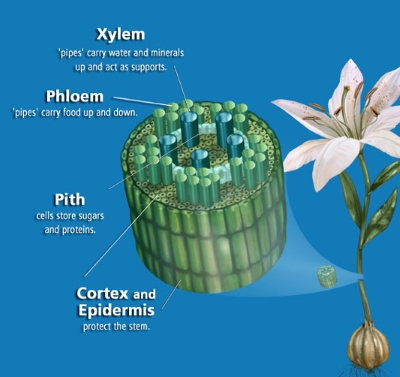
- Photosynthetic organisms clustered around nutrient rich shoreline
- Turbulent shoreline resulted in the evolution of multicellular organisms with strong cell walls, holdfasts, tissues
- Land had abundant light, carbon dioxide, oxygen
- Early plants developed water retention and collection systems, roots, leaves with a waxy cuticle, stomata, vascular system (xylem and phloem tubes)
- xylem: ‘pipes’ carry water and minerals up and act as supports
- phloem: ‘pipes’ carry sap (root foot) down
- pith: cells store sugars and proteins
- cortex and epidermis protect the stem
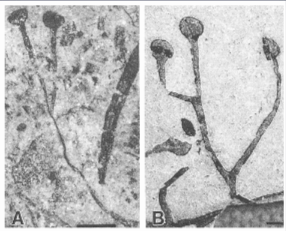
Cooksonia fossil
- Plants evolved from green algae and share common characteristics
- Invasion of land 430 mya
- Cooksonia fossils one of earliest and simplest plants known
- Key Evolutionary Characteristics
- formation of embryo (reprod. structure that develops into plant)
- ability to stand upright and grow tall
- to get as much sunlight as pssible
- tissues to transport nutrients, waste, and water
- strategies to reduce water loss
- strategies to disperse reproductive structures without water currents
- lignin: chemical that hardens cell walls
Major Periods of Plant Evolution
| Time Period | Key Evolutionary Event | Examples Today |
|---|---|---|
| 475 mya | Primitive plants evolve from algae; no leaves, stems, seeds, or rigid tissue | Mosses |
| 425 mya | Plants develop lignin and vascular tissues; can grow upright and farther from water | Ferns |
| 365 mya | Seeds develop; protect embryos and allow wider land spread | Seed plants (gymnosperms) |
| 135 mya | Flowers appear; help with reproduction and seed dispersal | Flowering plants (angiosperms) |
Alternation of Generations
- life cycle alternating between diploid and haploid forms
- each form distinct, multicellular gens.
- alternation of generations: alternation between haploid and diploid forms
- Haploid Generation
- gametophyte: plant gametes (egg / sperm cells)
- prod. of egg and sperm cells
- Diploid Generation
- sporophyte: plant spores
- prod. of spores
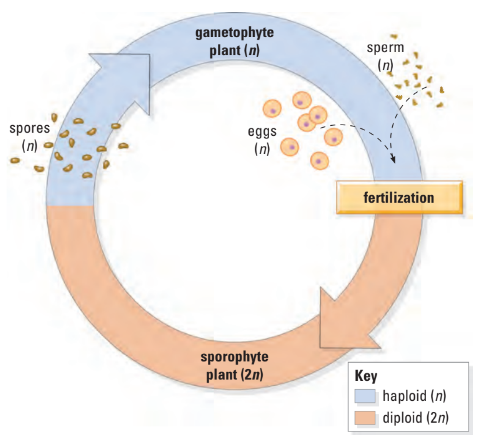
Green Algae
- modern relatives of plant ancestors
- found in shallow fresh water
- originally classified as Protista
- many green algae have been found to be plants
- have cell walls
- and photosynthetic pigments
- identical to plants
The Bryophytes: Liverworts, Mosses, and Hornworts
- bryophytes: seedless non-vascular plants
- Found in moist environments
- Relatively unspecialized plants
- grow close to the ground in damp locations for easy water access
- NON-VASCULAR plants: plants without xylem or phloem
- no seeds, stems
- no rigid support structures
- i.e. lignin-reinforced cell walls
- gametophyte dominant generation
- sperm flagellated and must swim towards eggs
Division Hepatophyta: The Liverworts
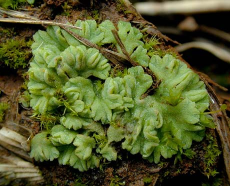
- hepato = liver-related
- Simplest plants, small, and inconspicuous
- Lack stomata, cuticle
- Evolutionary branch seperate from other plants
- Sexual reprod. by sports, asexual reprod. by fragmentation
- fragmentation: reproduction by breaking plants apart for new plants to grow
Division Bryophyta: The Mosses
3 classes: Bryidae (true mosses), Sphaginidae (peat mosses), Andreaeidae (granite mosses)
Class Sphaginidae: The Peat Mosses
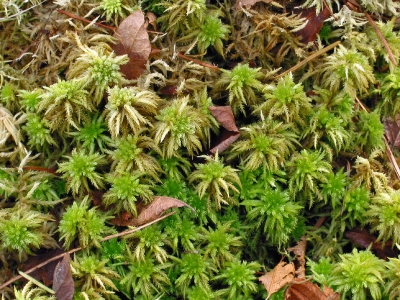
- Form densely packed peat bogs in cold and temperate regions
- Peat bogs cover 1% of World’s land surface area
- Bogs highly acidic, pH 4 or less
- Peat formed by compression of dead moss
- Peat is absorbent because of pores in dead plants
- Peat can absorb 20x its own dried mass (cf. cotton 4-6x)
Uses of Peat
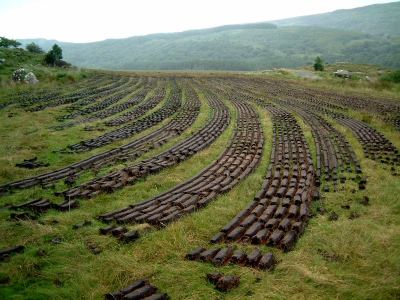
- Wound dressings (pre-WWI)
- Horticulture: agriculture of plants
- Industrial fuel
- Domestic heating
Seedless Vascular Plants
- No flowers or seeds!
- vascularization: formation of xylem and phloem
- Evolution of conducting tubes (xylem and phloem) solved problem of water and food transport
- Plants could now grow larger
- Underside of gametophyte
- sperm and egg producing structures
- sperm flagellated and swim through film of water to eggs
- sporophyte dominant generation
- 4 Divisions
Division Sphenophyta: The Horsetails
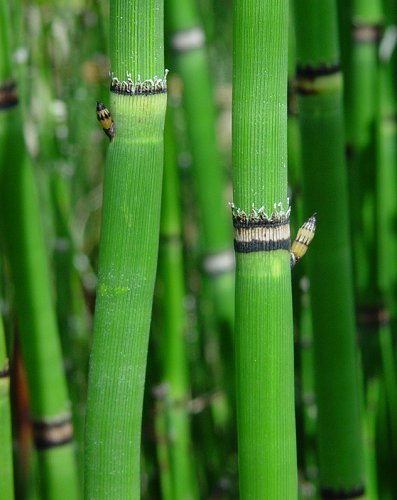
- Mostly extinct, reached max. diversity 300 mya
- One genus survives: Equisetum
- Jointed stems, rough texture from ribs strengthened by silica
- ‘Scouring rushes’
Division Pterophyta: The Ferns
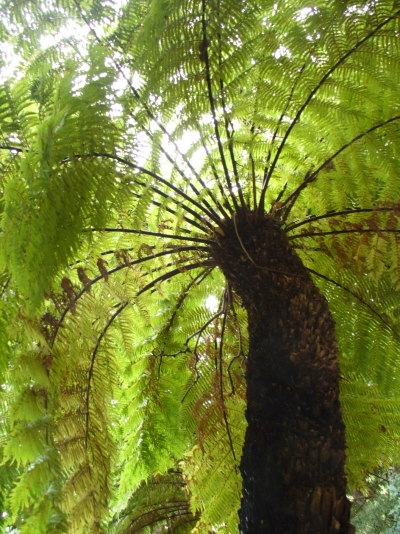
- 11,000 species species, abundant since Carboniferous
- Most diverse group
- Anatomy: fiddleheads, fronds, rhizomes (underground stems)
- Asexual reprod. by fragmentation
- Sexual reprod. by spores
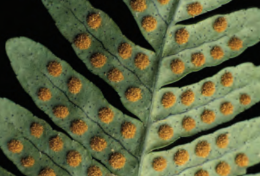
Each brown “dot” on the underside of this fern leaf is made up of many capsules that each contain large numbers of spores.
Seeded Vascular Plants
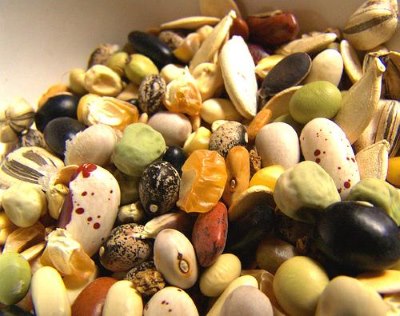
- Seeds responsible for domination of these plants
- Why? Seed has survival value
- Guaranteed to grow when planted under right conditions
- Seed protects and feeds plant embryo
- Overall advantage over spores
- 2 types
- Gymnosperms (naked seed)
- Angiosperms (vessel seed)
Gymnosperms: The Naked Seed
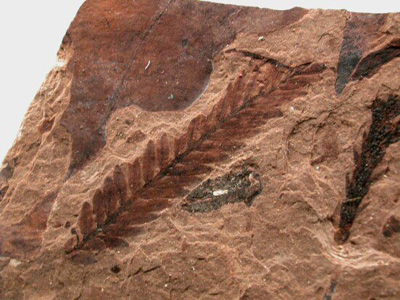
- gymnosperms: plants that bear “naked” seeds
- “naked” seeds not protected and enclosed in ovary
- 4 divisions
- diploid sporophyte gen. more highly developed than haploid gen.
- i.e. pine tree is sporophyte
- gametophytes live in cones
- pollen grain: small male gametophytes that contain cells that develop into sperm
- adaptation to dry land
- Male gametophyte is the pollen grain
- Transfer of pollen to female gametophyte called pollination
Division Coniferophyta: The Conifers
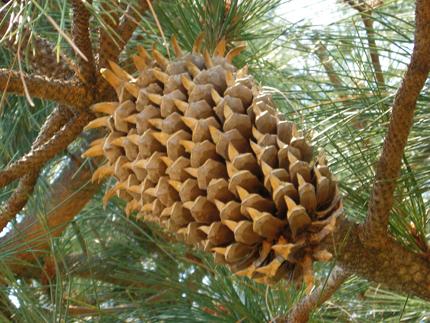
- Includes pines, spruces, junipers, cedars
- Thin needle-like leaves and thick waxy cuticle reduces water loss
- Well-developed roots
- Basis of many ecosystems
- Economically important in building pulp and paper
Division Cycadophyta: The Cycads
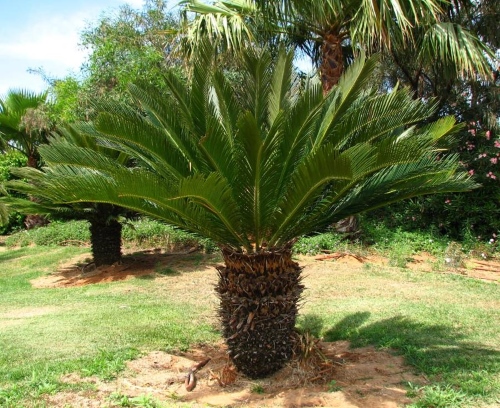
- Palm-like tropical and subtropical plants
- Mesozoic era ‘Age of Dinosaurs and Cycads’
- i.e. Sago Palm
Cycad Fossil
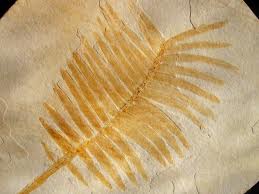
Division Ginkgophyta: The Ginkgos
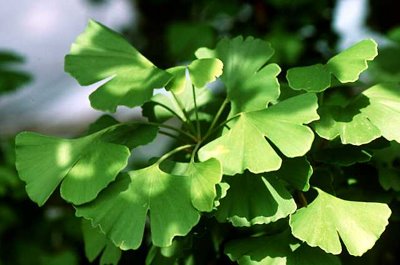
- One survivor: Gingko biloba, the Maidenhair Tree
- Slow growing tree w/ fan-shaped leaves
- Living trees grown in Chinese and Japanese temples
- no ginkgos left in the wild
Gingko Fossil
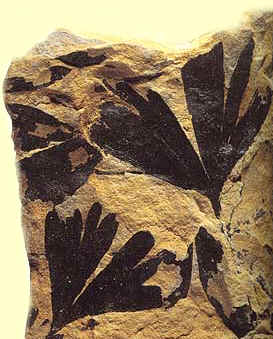
Division Gnetophyta
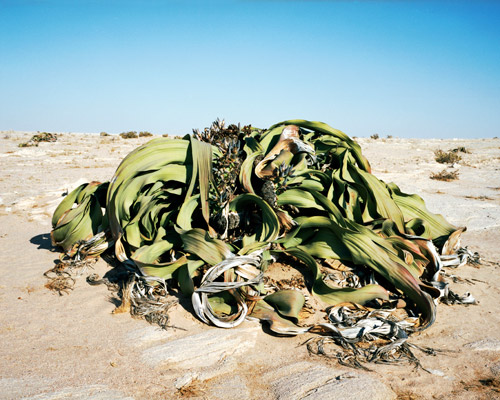
Welwitschia
- Consists of genuses:
- Gnetum → tropical trees
- Ephedra → dry climate shrubs
- Welwitschia → one species of two-leaved desert plant
Angiosperms
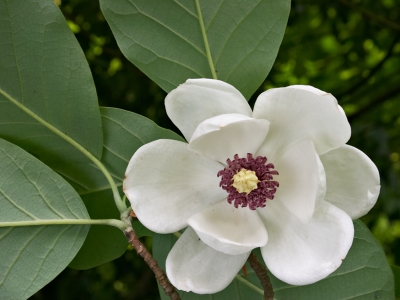
- angiosperms: plants that produce flowers
- means “enclosed seed”
- The flowering plants
- Over 250,000 species
- Structures to prevent water loss and improve reprod. on land
- Flowers most effective reprod. and speed dispersal structures in Plantae
- adaptations to attract insects or other animals
- transfer of pollen flower to flower
- ovary develops into fruit after pollination
- Seeds enclosed by fruit
- fruit: ripened ovary of a flower
- attract animals to eat them
- seeds usually remain undigested and spread through wastes
- other fruits stick to animals
- maple keys adapted for wind dispersal
- coconuts adapted for water dispersal
- Reproduce asexually and sexually
- Sexual repro. produces genetic variability
Classification
- One division: Anthophyta
- Two classes
- Monocots: one seed leaf, i.e. corn
- Dicots: two seed leaves, i.e. bean
- Evolution closely tied w/ insects and other pollinators
- Major food source for humans
Monocots vs. Dicots Diagram
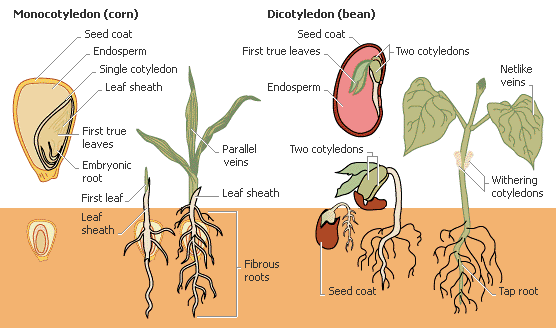
Anatomy of Flower: Diagram
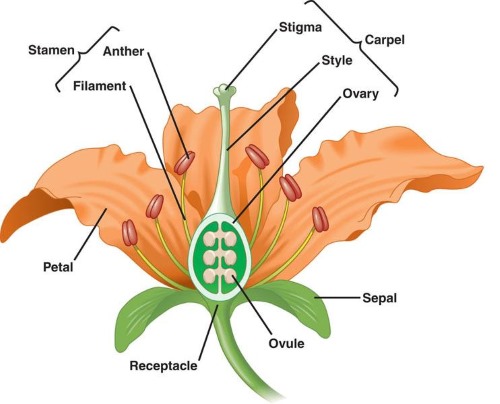
Plant Secondary Metabolites
- ‘The plant/insect chemical arms race’
- Plants produce poisonous compounds or bad-tasting compounds
- i.e. nicotine, caffeine
- Examples
- Coffee
- Tea
- Tobacco
- Opium
- Payote (hallucinogen)
- Marijuana
Climate Change
- transpiration: plants giving off water vapour
- moves lots of water from ground to atmosphere
- rainforests produce high water vapour, causing rain
- deforestation reduces precipitation
- nearby farmland gets less rain, needs irrigation
- local microclimates and species diversity affected
- ecosystems may recover if damage stops
- heavy deforestation may prevent rainforest regrowth